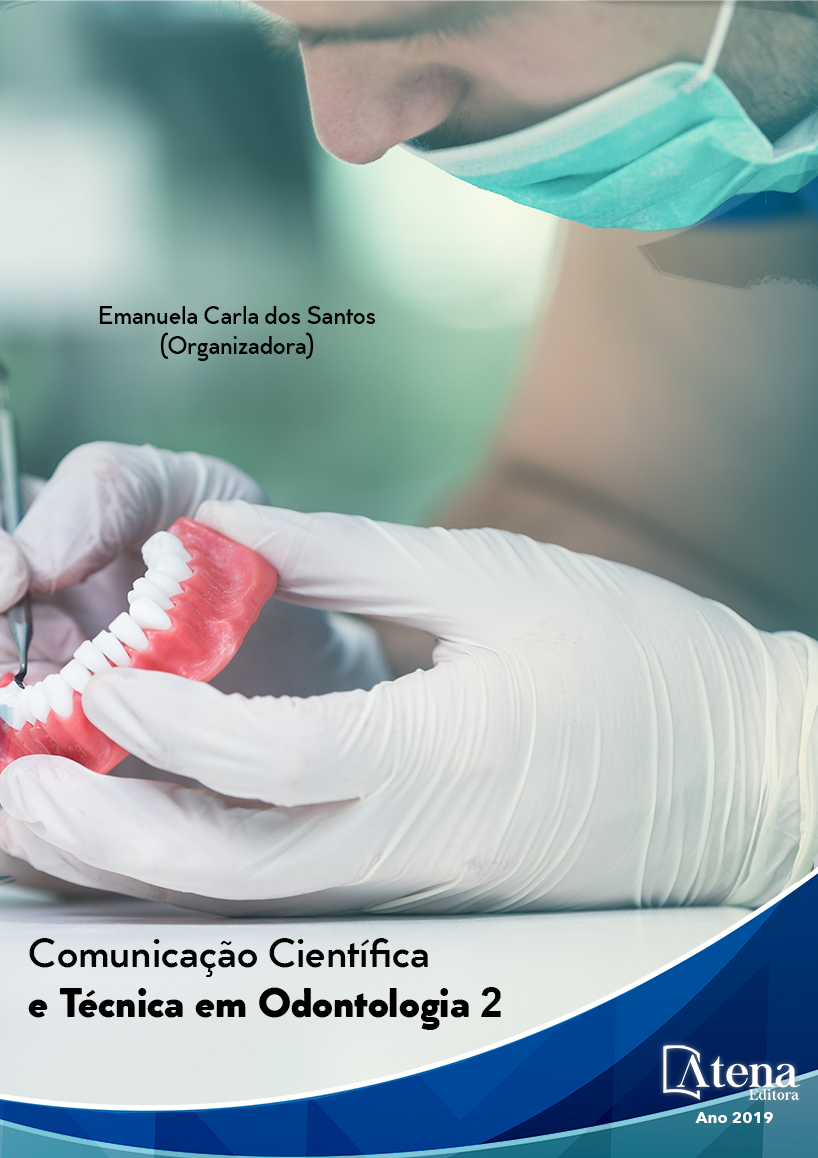
COMPORTAMENTO BIOMECÂNICO DOS COMPONENTES DE PRÓTESES PARCIAIS FIXAS DENTO SUPORTADAS CONFECCIONADAS COM DUAS DIFERENTES INFRAESTRUTURAS: METAL E POLI-ETER-ETER-CETONA (PEEK)
O comportamento biomecânico
dos componentes de próteses parciais fixas
dento suportadas fabricadas com duas
infraestruturas diferentes (metal e poli-etereter-
cetona) foi analisado através do Método
de Elementos Finitos. A geometria dos modelos
foi idêntica. Modelo M1: prótese parcial fixa
com infraestrutura metálica e cobertura com
cerâmica feldspática; Modelo M2: prótese parcial
fixa com infraestrutura em PEEK e cobertura
com resina indireta. A carga axial foi aplicada
com vetor perpendicular ao plano oclusal e a
carga oblíqua com vetor no sentido vestíbulolingual.
Os dados foram registrados, avaliados
e comparados gráfica e numericamente. Os
resultados assumiram valores próximos, com
um melhor desempenho mecânico do modelo da
prótese com infraestrutura metálica e cobertura
cerâmica na maioria das estruturas analisadas,
mas com um desempenho similar da prótese
com infraestrutura em PEEK e cobertura com
resina indireta.
COMPORTAMENTO BIOMECÂNICO DOS COMPONENTES DE PRÓTESES PARCIAIS FIXAS DENTO SUPORTADAS CONFECCIONADAS COM DUAS DIFERENTES INFRAESTRUTURAS: METAL E POLI-ETER-ETER-CETONA (PEEK)
-
DOI: 10.22533/at.ed.26519290316
-
Palavras-chave: Prótese Parcial Fixa. PEEK. Simulação por Computador.
-
Keywords: Fixed Partial Prosthesis. PEEK. Computer Simulation.
-
Abstract:
The biomechanical behavior of
supported fixed partial denture components
manufactured with two different infrastructures
(metal and polyether ether ketone) was analyzed
using the Finite Element Method. The geometry
of the models was identical. Model M1: fixed
partial prosthesis with metallic infrastructure
and cover with feldspathic ceramics; Model M2:
Fixed partial prosthesis with PEEK infrastructure
and indirect resin coverage. The axial load
was applied with vector perpendicular to the
occlusal plane and the oblique load with vector
in the lingual-lingual direction. The data were
recorded, evaluated and compared graphically
and numerically. The results assumed close
values, with better mechanical performance of
the prosthesis model with metallic infrastructure
and ceramic covering in most structures
analyzed, but with a similar performance of the
prosthesis with PEEK infrastructure and indirect
resin coverage.
-
Número de páginas: 15
- Elimário Venturin Ramos
- HELOISA RUFINO BORGES SANTOS


